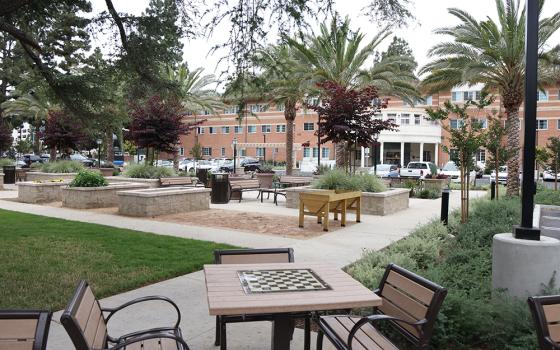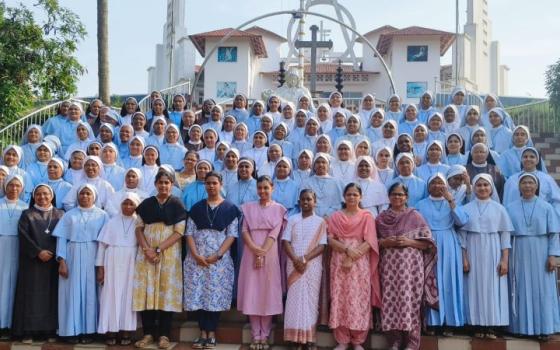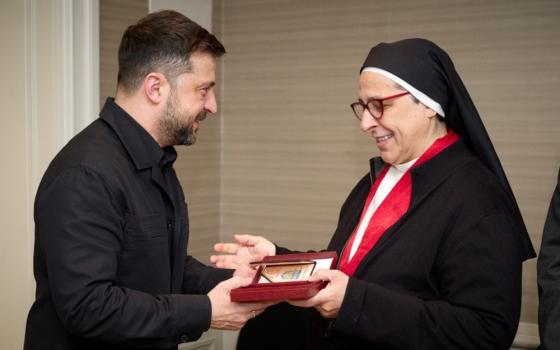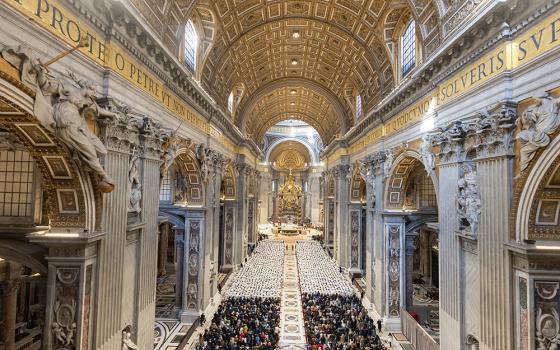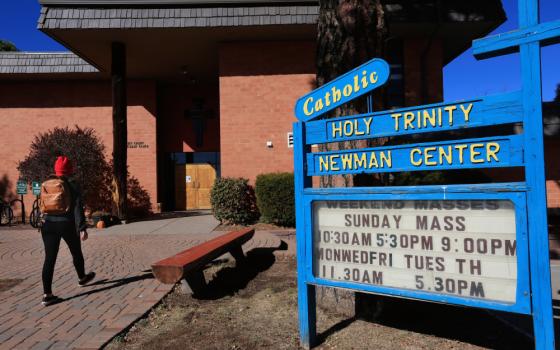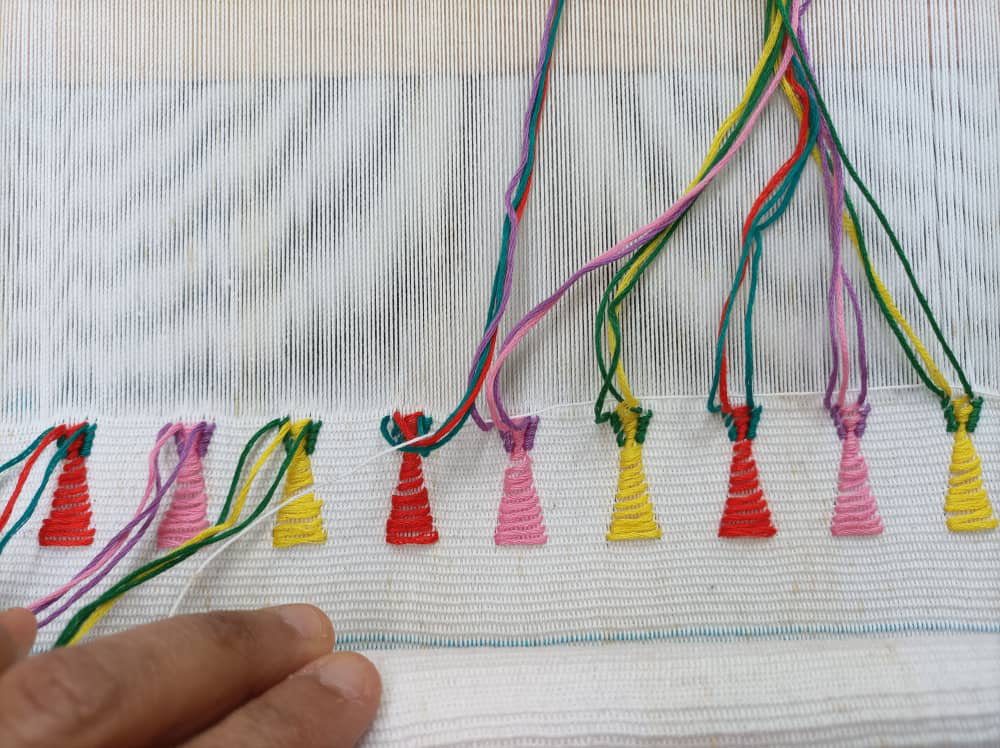
Small patterns incorporated into Lourdes Munguia's weaving work done on a loom (Courtesy of Lourdes Munguia)
I learned to weave with an indigenous woman from Oaxaca, Mexico while I was going through a personal transition. She taught me how to weave threads and colours together. At the time, I felt my life was broken, but she showed me how to fix it.
The backstrap loom is the perfect metaphor for our religious life. Weaving together colours and feelings is a traditional way of creating with one's own hands.
First, threads are woven together. They are assembled into a structure, thread by thread. This is done with patience to discover what the threads want to express. You dream about what the new piece will be, and the colours intermingle.
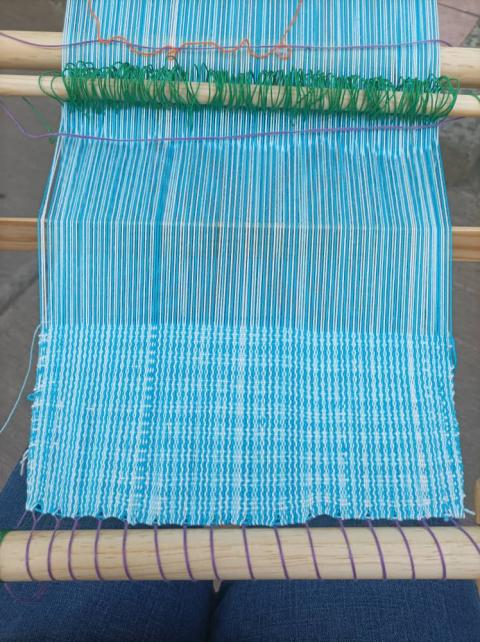
Blue threads being woven together on Munguia's loom. (Courtesy of Lourdes Munguia)
In this exercise of discovering the different colours of life, my own darkness and light are also revealed. Together, they make me who I am. It is a time to discover and begin to dialogue with the diverse colours that make up life, and to recognize and reconcile myself with my own shadows. This process is not only experienced during initial formation, but also at specific moments in our lives, allowing us to recreate ourselves as persons, as consecrated women, as sisters.
The threads are then mounted on the loom, which, to the untrained eye, looks like just a set of sticks. However, this essential structure allows the threads to be woven together. Each person experiences an internal process that is not visible to others. It has an undeniable element of mystery, unfolding in the presence of God who sustains it. We cannot judge this process from the outside, because we do not know it. It is not possible to understand how God tenderly accompanies each one of us. Trust in God is the only way. He is patient and tender with his people and with each one of us.
Then comes the patience of building the heddle, a crucial step. These are threads that go from one side to the other, guiding which threads rise and which ones fall. The work requires patience and careful attention. When done well, it allows the loom to move forward smoothly. Several times I have had to redo the heddle before even starting to weave.
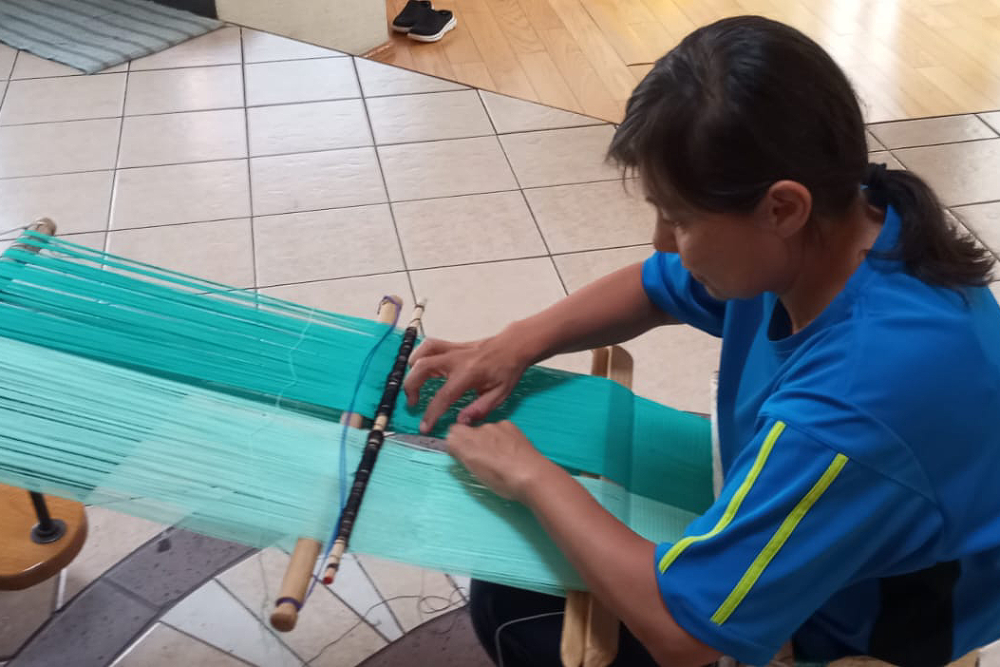
Lourdes Munguia works at a backstrap loom. (Courtesy of Lourdes Munguia)
In consecrated life, there are moments when the heddle — our life's threads — become tangled, and it is necessary to stop and rebuild, creating a structure that gives new meaning to our consecration. I deeply believe that sometimes it is necessary to reread and recreate the origin, the essential motivation that God gives us through our personal vocation.
Weaving can only begin once the loom is properly prepared. While the process may have begun earlier, the weaver now sits down, securing the loom to a fixed column or tree, and attaching it to the waist. Sitting at the loom is a way to pause and ground myself so I can hold the loom with strength and allow the threads to pass through little by little. I cannot weave if I am not sitting properly, because the tension of the threads changes, and the weaving becomes uneven. It is vital to be mindful and present in the here and now, in the energy of Mother Earth that embraces us. We must make time to pause and re-root ourselves. This is essential for finding the meaning of life and anchoring ourselves to what is truly important.
Advertisement
The heddle directs the warp threads, combining them to create the piece. The weft thread passes from one side to the other, unnoticed, hidden and holding the plain threads together so they become a single piece. With each turn, the fabric advances little by little. As in our daily lives, it is the silent and hidden presence of God that sustains us and gives identity to our being. This is how we construct our own identity, it is never static nor finished; it is built and rebuilt in the simplicity of life, in small rituals, in joy and sadness, in peace and tension.
I remember how at one point I asked my teacher to show me how to make patterns on the loom. She taught me how to make small corn cobs, explaining that corn symbolizes life. I believe that through my weaving I was also rebuilding my own life, giving new meaning to my vocation and embracing the mission that God was giving me at that moment. The loom became an expression of my personal reconstruction, a sacrament of God's stubbornness in refusing to give up my life. What I initially perceived as broken in my life took on meaning in a resurrection expressed in the loom, in its colors, in its strength, in its beauty.
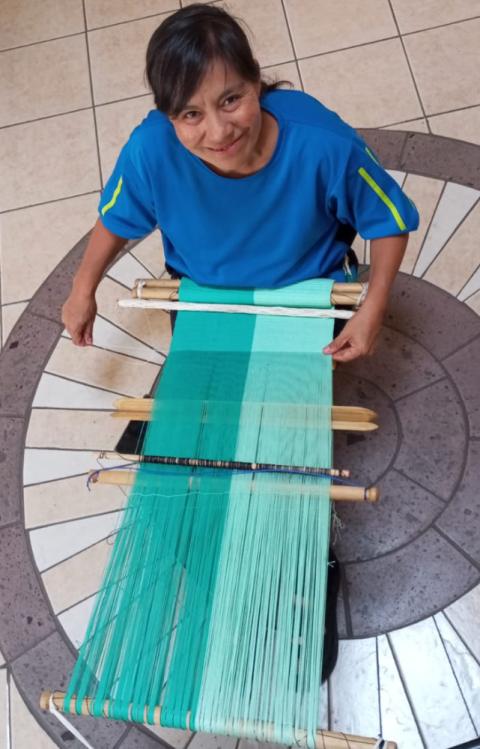
Lourdes Munguia works at a backstrap loom. (Courtesy of Lourdes Munguia)
A loom is not finished quickly; it has its own rhythm and pace. Perhaps, like the loom, we need time for silence, time to put down roots, time to dream, time to say goodbye, and time to sustain life. It is not possible to live fully if we try to skip over time and space.
I believe that we often struggle to remain in situations that we find challenging. However, weaving has taught me that remaining does not mean staying stuck. It is about living an embodied spirituality, a new creation, learning to live from the certainty that every moment is God recreating us.
To interweave life is to allow God to dream us as sisters, to mother us so we learn to care for his anawim with unconditional love. God molds us into a work of his heart, so that our way of life expresses the tenderness of a God who bends down toward his people.

